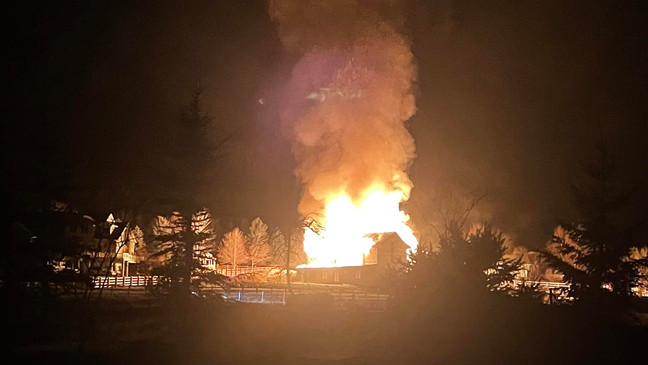
It was a calm, uneventful night in Utah County — the kind of night where the only sound was the distant hum of cars on the highway and the soft wind moving through trees. Most homes were dark, families asleep, unaware of how dramatically their night was about to change.
Shortly after midnight, a strange rumble echoed across several neighborhoods. Some residents later said it sounded like thunder; others thought it was construction machinery. But the noise persisted, growing into something deeper, heavier, more unsettling.
A few minutes later, the sky suddenly lit up. A bright orange glow appeared on the horizon, rising quickly and reflecting off windows and parked cars. People stepped outside in confusion, unsure of what they were witnessing.
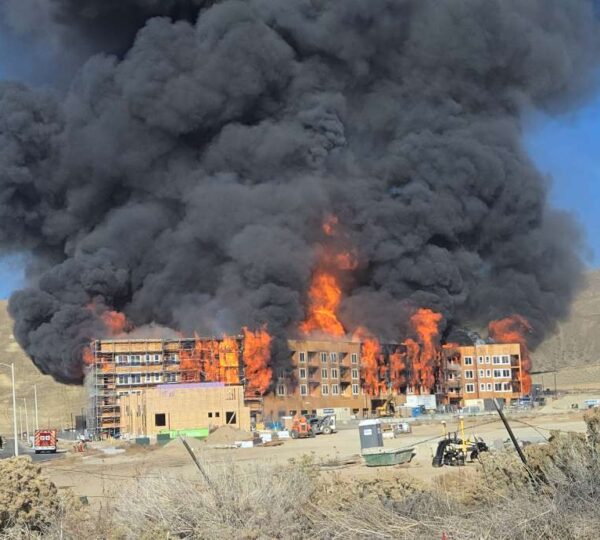
As the glow intensified, smoke began to drift over rooftops. At first it was faint, a thin gray layer drifting across the air. But within seconds it thickened, rolling in heavy waves. Then the flames became visible — massive, violent flames that pierced the night sky like blazing towers of fire.
Neighbors gasped as the flames shot higher and higher, engulfing the large structure in seconds. Some began recording, capturing footage that would later spread across social media. Even from far away, the heat was visible in the way the air shimmered and warped.
The building, believed to be an industrial or storage facility, was quickly consumed. Windows burst outward from the intensity, sending shards of glass scattering into the street. Cracking noises echoed across the neighborhood as wooden beams snapped under the heat.
Parents woke up their children, urging them to move away from the windows. Several families gathered outside, unsure whether to stay or flee. The sight was overwhelming — a wall of flames rising and falling like waves on a burning ocean.
Sirens began to fill the air. First one. Then another. Then dozens.
Fire trucks raced toward the scene from multiple county departments. Lights flashed against the smoke-filled sky, creating an eerie red-and-orange glow. Firefighters rushed to connect hoses, assess wind direction, and begin attacking the blaze from multiple angles.
The wind, however, made the battle far more difficult. Strong gusts blew embers across the street, causing firefighters to split their efforts between containing the main fire and ensuring that nearby homes didn’t ignite.

Residents stood behind police barricades, watching anxiously as sparks drifted around them like glowing snow. Some covered their faces with towels or shirts to block the smoke. Others held phones, capturing every moment in disbelief.
Many described hearing explosions from inside the structure — possibly machinery, pressurized tanks, or electrical units failing under the extreme heat. Each explosion sent another plume of flame into the air, creating gasps from the crowd.
Fire officials issued warnings over emergency radio channels, urging drivers to avoid the area entirely. Traffic was redirected as far as several miles away as additional crews arrived to support the overwhelmed responders.
By 1:30 a.m., the building was fully engulfed. Flames poured out of the roof, swallowing metal beams and collapsing entire sections of walls. Large chunks of the structure fell inward, sending showers of sparks flying in every direction.
The glow of the fire could be seen from cities miles away.
People who lived far outside the immediate area reported stepping outside and seeing the orange sky. Some thought it was sunrise. Others assumed lightning had struck. But as news alerts began circulating, the reality became clear.
Inside the emergency zone, firefighters worked tirelessly. Their silhouettes moved back and forth in front of the flames, illuminated by the intense light behind them. Their movements were precise, practiced, and relentless.
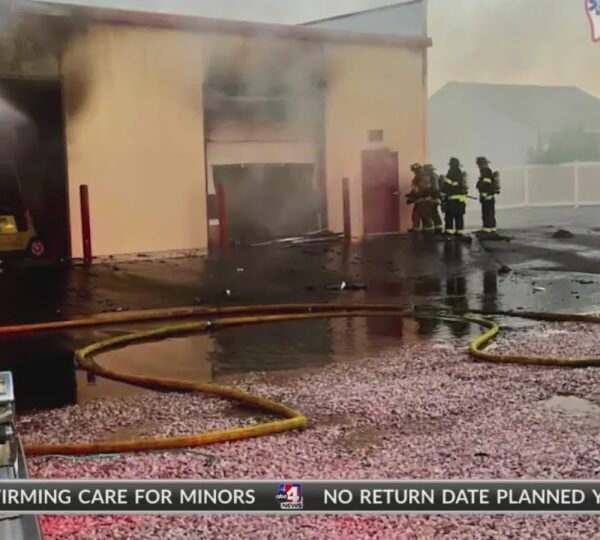
Paramedics set up a medical area for anyone affected by smoke inhalation. Several residents were treated at the scene, though none required hospitalization. Firefighters rotated constantly, stepping back only long enough to catch their breath before returning to the front lines.
At 2:00 a.m., a section of the building collapsed with a thunderous crash. The crowd behind the barricades jumped at the noise. Flames shot even higher, feeding on newly exposed materials. Firefighters quickly adjusted their strategy, attacking from a safer angle.
More than 100 firefighters were eventually deployed. Their cooperation across departments was crucial. Without their coordinated response, the fire might have jumped to nearby homes, creating an even larger disaster.
As the hours passed, conversations among residents shifted from shock to concern. Many wondered what the building contained. Others worried about toxic smoke. Some spoke quietly about how grateful they were that the fire hadn’t started earlier, when more people might have been inside.
Around 3:00 a.m., the fire began to stabilize — not out, but weaker. Flames still burned inside the structure, but the towering fire columns had shrunk. Steam rose in thick clouds as water met the hot debris.
Even then, firefighters refused to let their guard down. They circled the building from all sides, checking for flare-ups and aggressively cooling hotspots. Heavy machinery operators stood by, waiting for clearance to approach the crumbling walls.
By 4:00 a.m., residents were finally allowed to return to their homes if they lived outside the immediate danger zone. But many stayed, unable to look away from the remains of the burning building.
Dawn began to break. The first light of morning blended with the orange flicker of the fire, creating a haunting contrast between night and day. Smoke drifted across the sunrise like dark ribbons stretching across the sky.
As more officials arrived, the investigation began — from a distance at first, because the scene was still too dangerous to enter. Investigators discussed causes: electrical malfunction, equipment failure, accidental ignition, or human involvement. Nothing could be confirmed.
Structural engineers arrived to evaluate the building’s integrity. Every wall was unstable. Every beam was warped. The entire site was a maze of hazards.
Residents, tired but unable to leave, spoke with reporters about the terror of the night. Many said they feared the fire would jump to their homes. Others described how their children cried at the loud noises and bright lights.
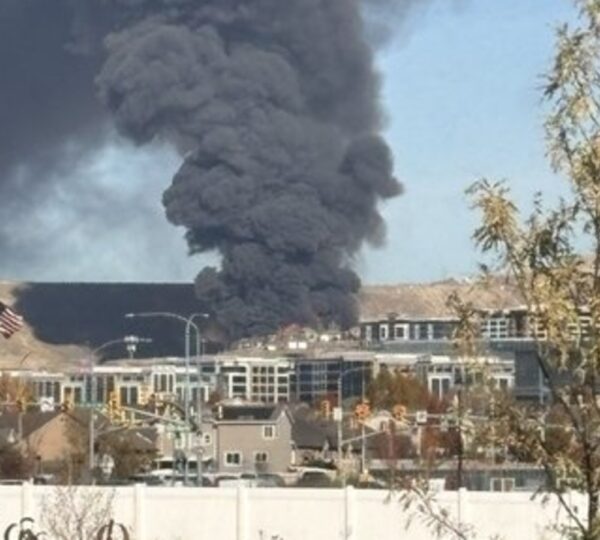
One resident said, “I saw it collapse in front of my eyes. You just feel helpless. The firefighters… they’re heroes. They didn’t stop for even a second.”
By 6:00 a.m., the fire was mostly contained, but not extinguished. Small pockets continued to burn beneath the debris. Firefighters would need hours more to fully secure the area.
As the sun rose higher, the full scale of destruction became visible. What had been a large industrial building was now a skeleton of metal and ash. Thick smoke continued rising upward, slowly spreading across Utah County.
Authorities announced that more information would be released later in the day after the site cooled enough to allow safe entry. They warned residents to avoid the area due to unstable debris, air quality concerns, and ongoing emergency operations.
Cleanup crews prepared for a long day ahead. Roads remained closed. Police directed traffic. Fire chiefs coordinated shift rotations so exhausted firefighters could rest.
Families began returning to their morning routines, but with a shaken awareness of how quickly life can shift from calm to crisis.
The story of this massive fire is still unfolding — and investigators will spend days piecing together what happened, what failed, and what ignited such a violent blaze.
In the face of a fire that lit up the night sky, Utah County stood together.
Firefighters showed remarkable bravery.
Residents supported each other.
And an ordinary night became a reminder of how fragile and unpredictable life can be.
THE NIGHT A FATHER AND SON RAN TOWARD FIRE — AND SAVED A LIFE.

Late-night roads have a strange silence to them. A kind of stillness that makes the world feel paused — headlights floating through darkness, engines humming low, the sky just beginning to fade into the deep blue of early morning. For Cadet Larry Pickett Jr., that drive home should have been ordinary. A quiet ride back to West Point after spending the evening with his family. A moment to unwind after Friday’s football game, to sit beside his father, and to enjoy the rare comfort of being off-duty, off-field, off-pressure.
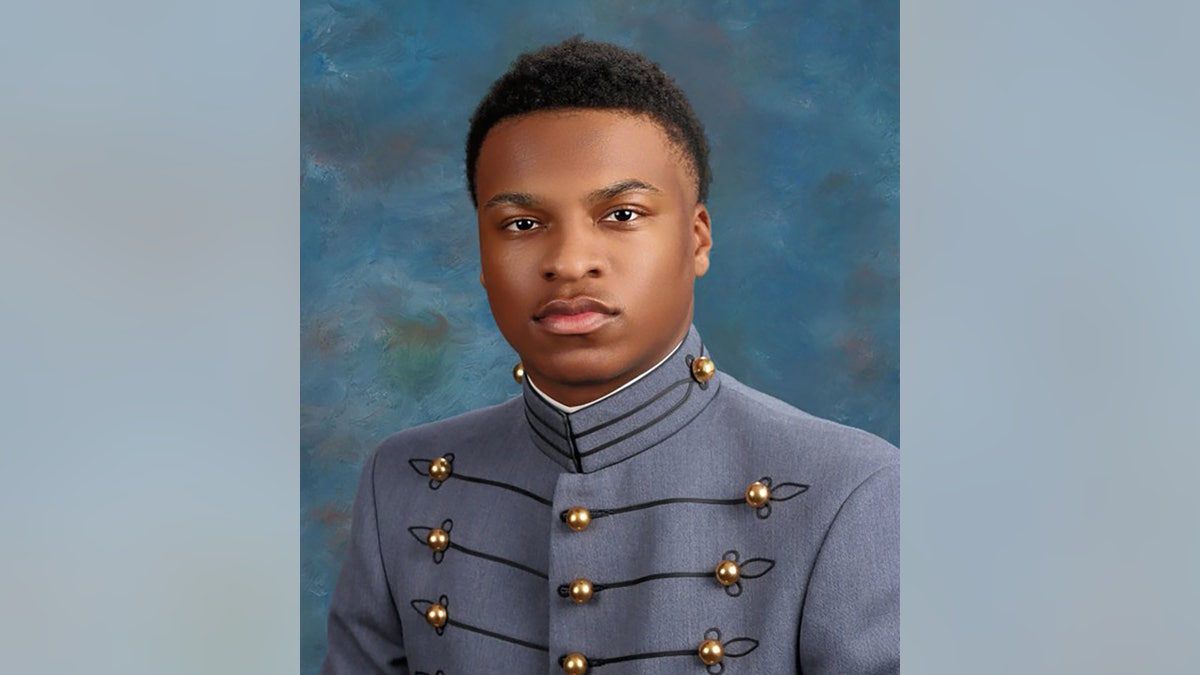
But fate, as it often does, had a different plan.
It began with a flicker. A flash of something not quite right on the roadside. His father, Larry Pickett Sr., slowed the car, squinting at the dark shape ahead.
“Power lines,” he murmured. “Looks like they’re down.”
They pulled over. Larry Jr. stepped out beside his father, expecting to help redirect traffic or call authorities. But then they heard it — the unmistakable crackle of electricity, hissing and popping through the air like angry sparks. And beside the fallen lines, half-hidden in the shadows, was a car crushed against a pole.
Smoke curled from the hood. A faint flame danced beneath the engine.
And inside… a figure.
A man slumped against the seat, unmoving.
For a heartbeat, Larry Jr. didn’t breathe. Didn’t blink. Didn’t move. That single moment — the one between recognizing danger and deciding what to do — was gone before he even felt it.
His father shouted, “Let’s go!”
And both men ran.
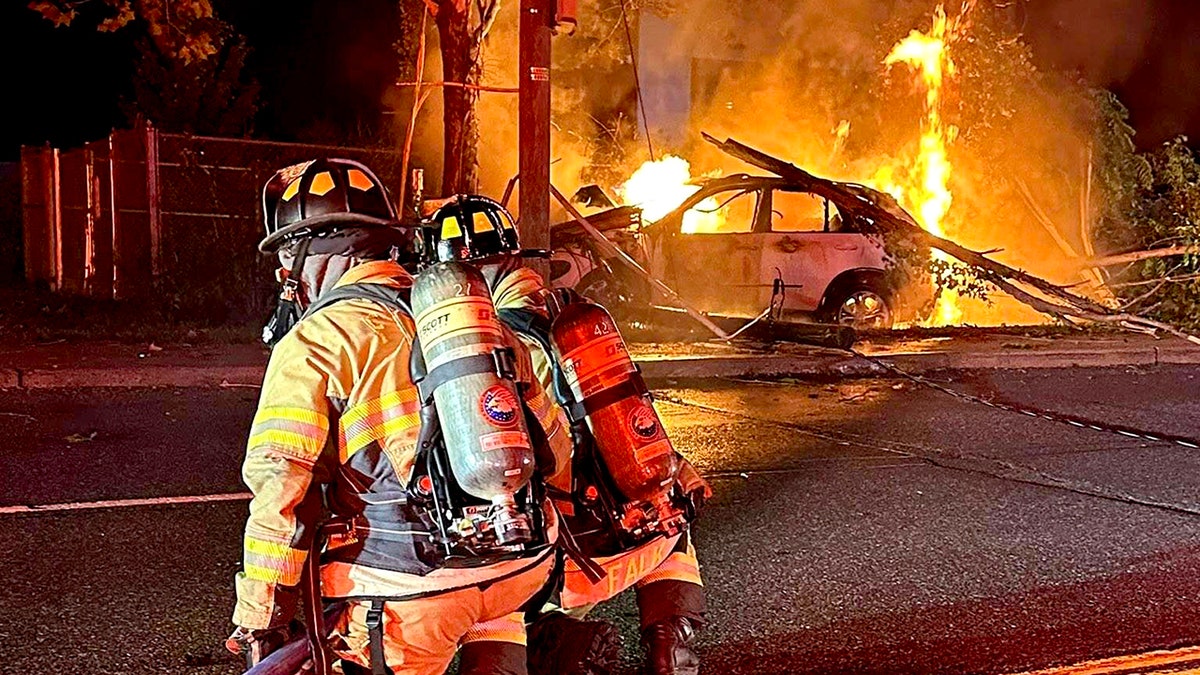
There are moments in life when instinct takes over — moments when the heart moves faster than the mind, when fear stands no chance against something stronger. For Larry Jr., that moment came as his feet hit the pavement and the smell of burning gasoline hit his nostrils.
The power lines snapped again — bright, violent sparks leaping into the air.
Most people would have backed away.
But father and son kept running.
The smoke thickened as they reached the car. The metal was hot. The flames growing. The door jammed tight. Larry Sr. braced himself and pulled with everything he had.
Nothing.
Larry Jr. stepped forward, adrenaline burning through his muscles. Together they yanked, slammed shoulders into the frame, tried again. This time it gave way with a metallic shriek.
The man inside barely stirred.
“Sir! Hey! Can you hear me?”
No response. His airway rattled shallowly, smoke already making its way into his lungs.
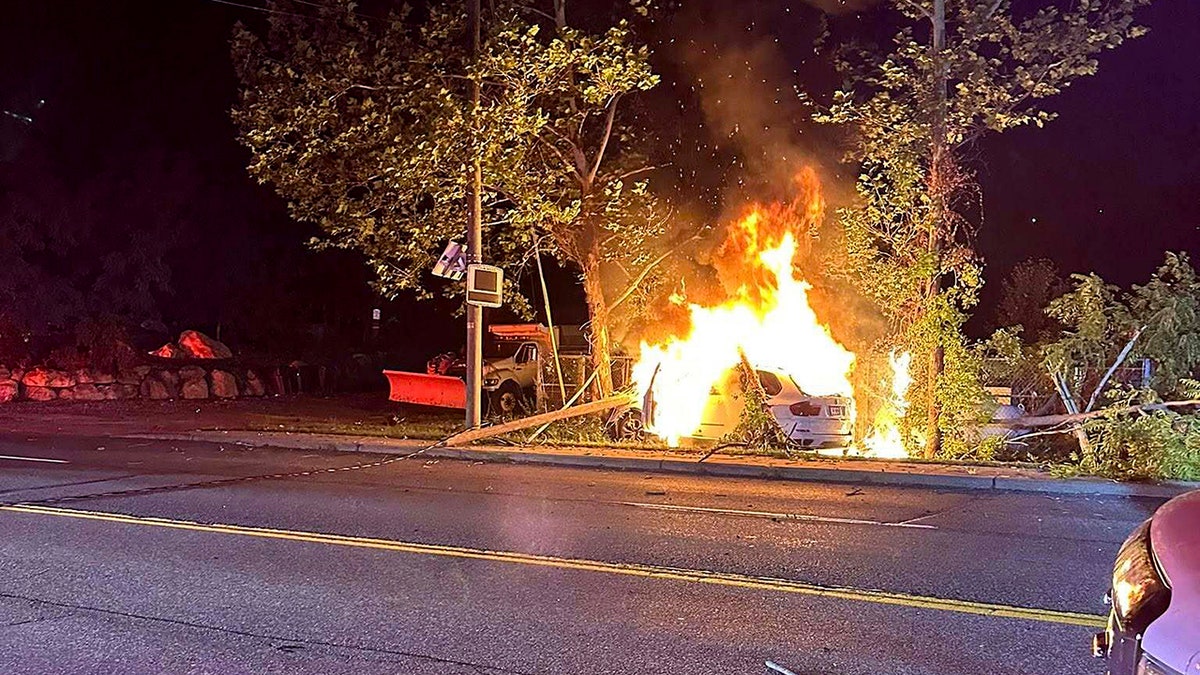
“We have to get him out,” Larry Sr. said. “Now.”
The flames beneath the hood flared higher. Time was running out.
Larry Jr. reached into the wreckage, wrapping his arms around the stranger’s torso, feeling the dead weight of someone too weak to help himself. His gloves gripped fabric slick with blood. His muscles strained under the effort.
“Pull!” his father yelled.
Together they lifted the man out of the broken doorframe and carried him, step by step, away from the wreck. The man gasped once, then fell still again.
Behind them — a roar.
The car ignited.
A burst of orange and white shot upward, engulfing the vehicle in flames so hot the air rippled. The explosion rattled the ground beneath their feet. The fire swallowed the car in seconds, turning it into a furnace of shattered glass and molten metal.
One more minute…
Thirty more seconds…
Even five…
If they had hesitated, the man would have died.
But he hadn’t.
He was alive because two men chose to run toward fire when the world expected them to run away.
In the glow of the flames, Larry Sr. looked at his son — sweaty, shaken, breathing hard, his arms trembling under the adrenaline spike.
“I’m proud of you,” he whispered.
Larry Jr. didn’t know what to say. He wasn’t thinking about pride. He wasn’t thinking about heroism. He was thinking about the man lying between them, gasping weakly but alive.
Minutes later, sirens filled the night — fire engines, paramedics, police cruisers. The chaos swirled around them, but all Larry Jr. could see was the crushed car burning like a beacon behind the rescue crews.
His father took out his phone and recorded a short video — not for fame, not for recognition, but because he wanted to remember the moment his son showed the kind of courage that defines a life.
“Thank you Jesus that this man will live to see another day,” he wrote later. “I am so grateful for my son LJ.”
The video spread faster than they expected. People across social media watched in awe as two figures sprinted toward a burning vehicle in the dark — watched them pull a stranger from danger, watched the fire erupt behind them like a scene from a movie.
But this wasn’t a movie.
This was a father and son, acting on instinct, acting on love for their fellow man.
West Point took notice almost instantly.
“We’re proud,” the Academy wrote in a public statement. “Their actions reflect the values we stand for.”
But Larry Jr. didn’t see himself as a hero. The word made him shake his head.
“I just did what needed to be done,” he said. “Anyone should.”
Maybe. But not everyone does.
Not everyone runs toward sparks and fire and the unknown.
Not everyone puts their own life at risk for someone they’ve never met.
Not everyone has the courage to act when every instinct screams to stay away.
Larry Jr. did.
And it wasn’t because he was a football player or a cadet or a soldier in training. It was because of who he was long before that —
A son raised by a father who knew that courage isn’t something you talk about. It’s something you show.

A young man learning that heroism doesn’t wait for the perfect moment — it rises in the impossible ones.
A human being who understood that a stranger’s life mattered just as much as his own.
That night, on a dark stretch of road, a car burned to ash.
But a life was saved.
A family was spared heartbreak.
And a community was reminded that real courage is quiet, instinctive, and selfless.
Larry Jr. will go on to play football, to study, to serve, to build a future. But long after the games are over and the headlines fade, one moment will remain:
The night he and his father grabbed each other’s hands — and ran toward fire.
A night when bravery didn’t wear a uniform or a helmet.
It simply wore the heart of a hero.
And because of that, a stranger is alive today.
